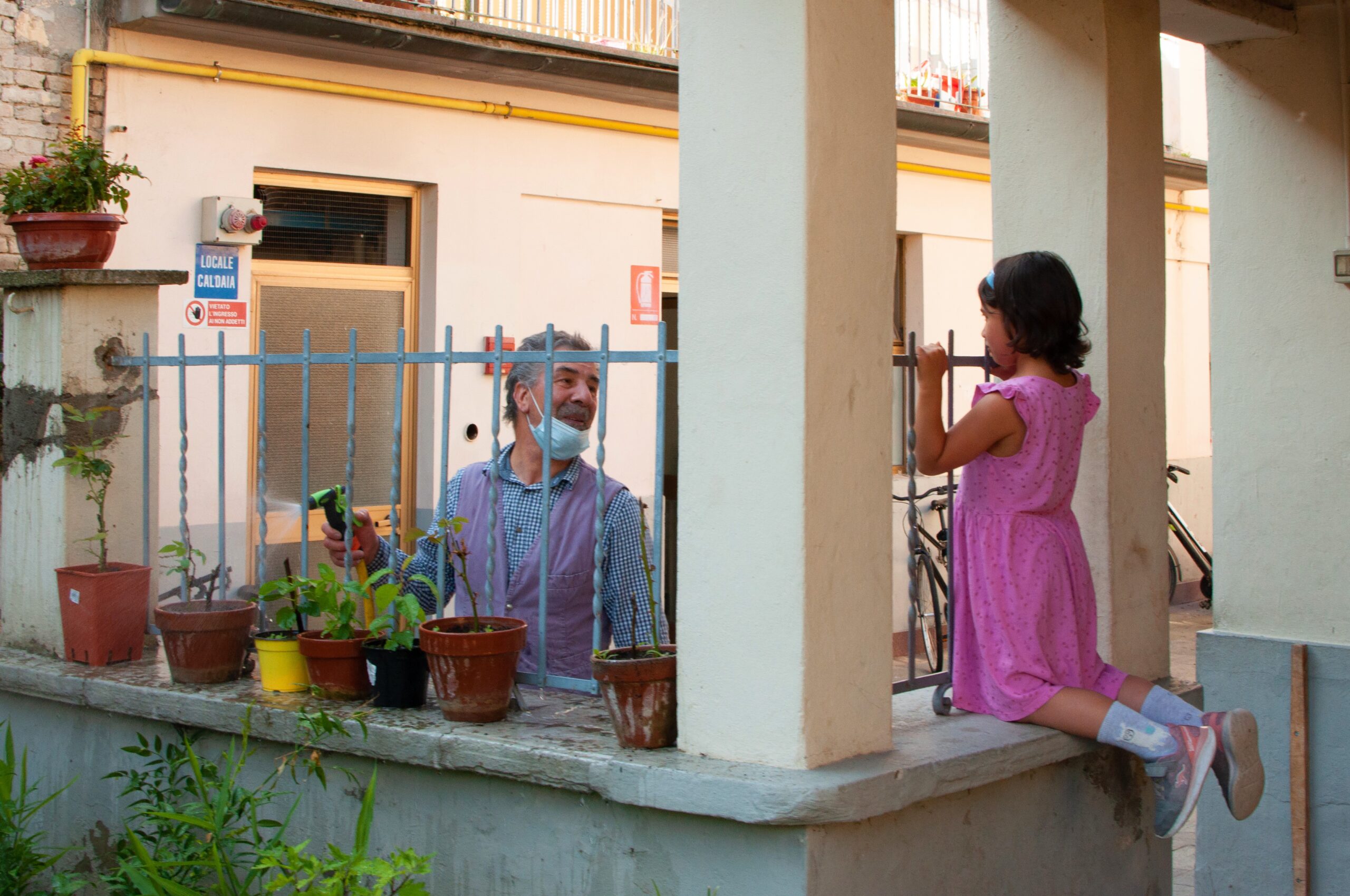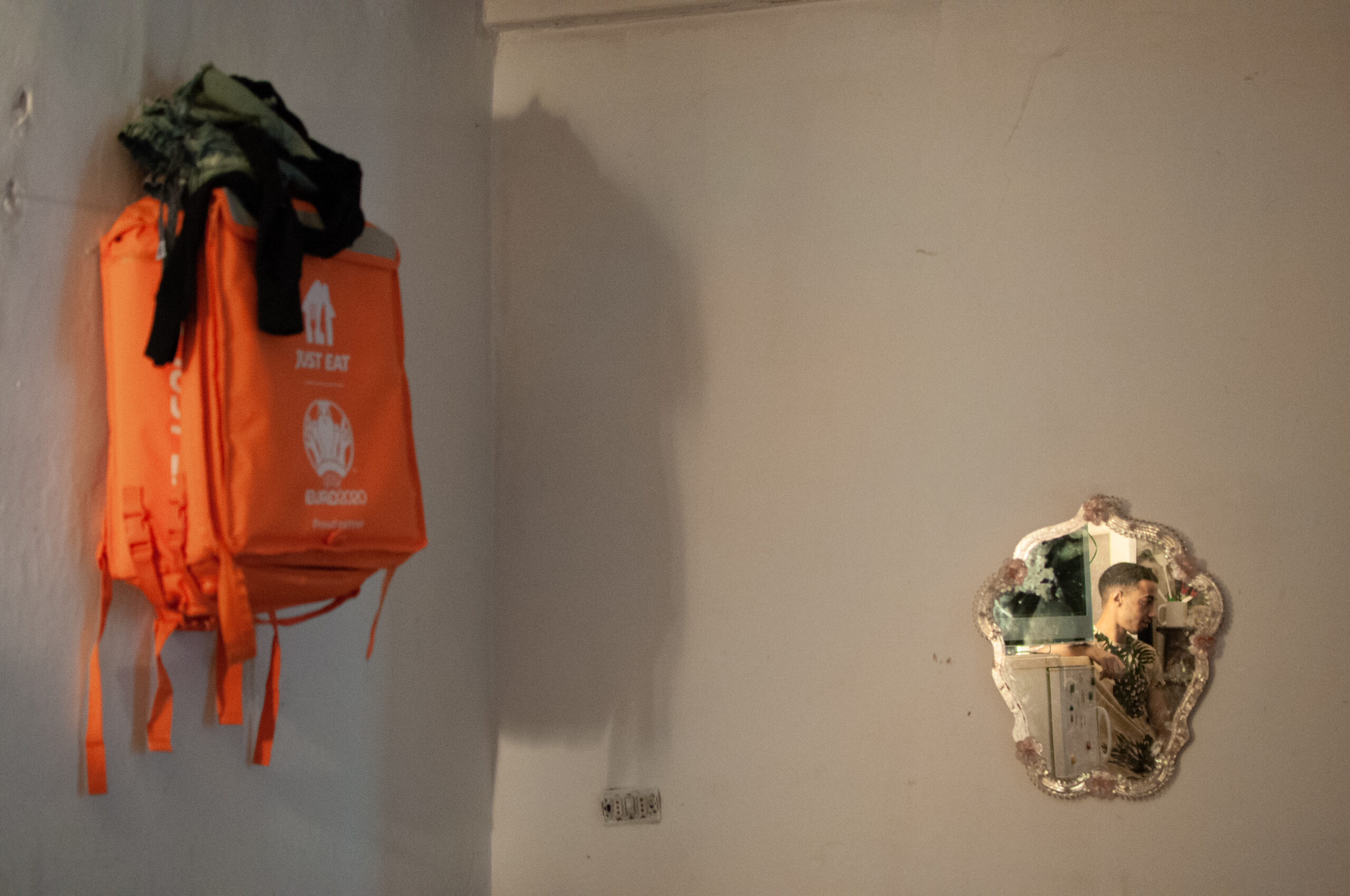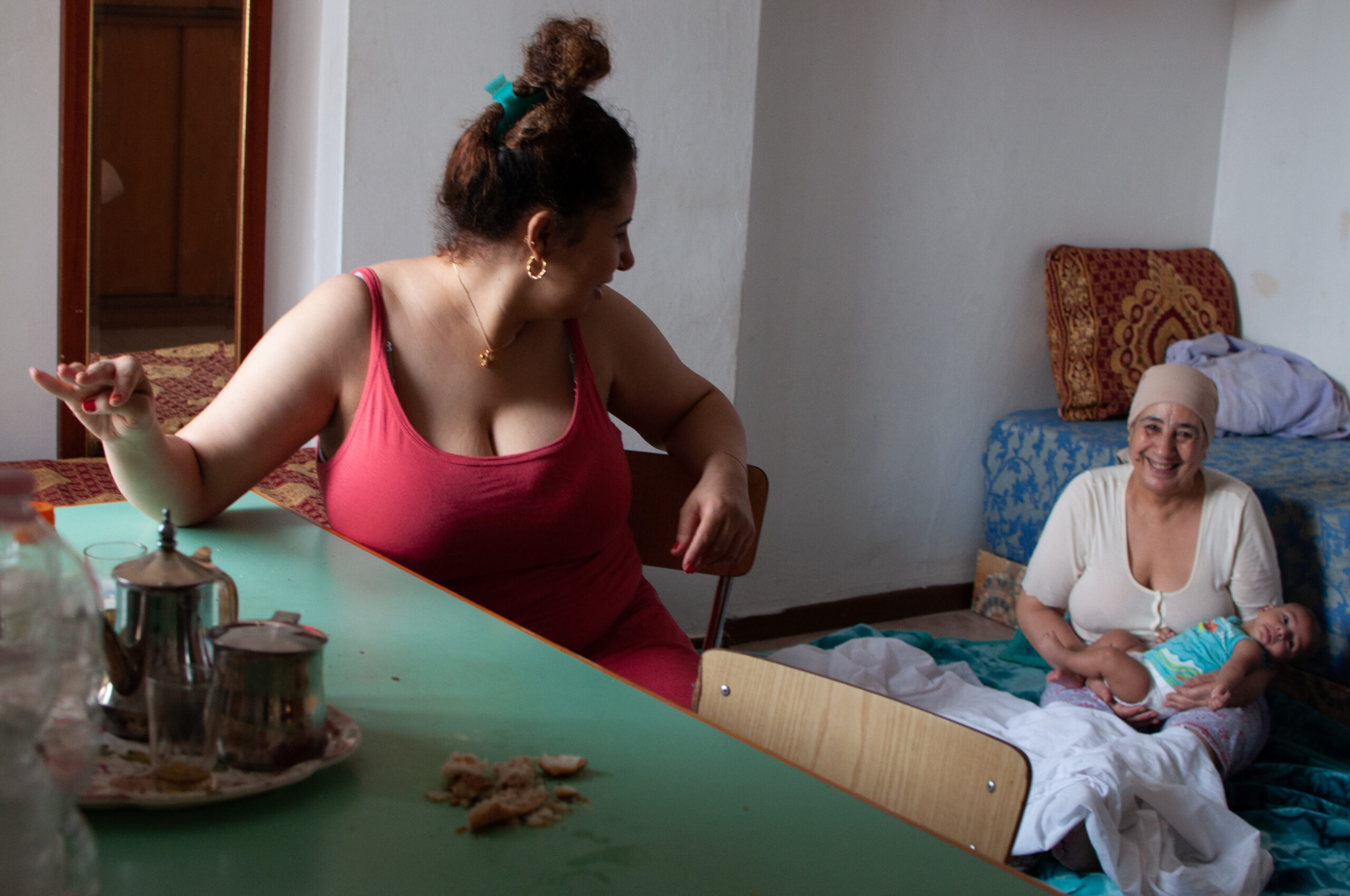Ex-Biondi: dall'occupazione all'occuparsi
Aiub on the threshold of the former Biondi institute. The structure has two entrances, one for each of the buildings that is made of, but the door of the largest building constitutes the main entrance. The common bell of the former institute was disconnected while, on the left, the mailboxes were crowded with the names of the tenants.
The former institute is made up of two buildings with floors at different heights, served by two staircases communicating with each other on the first and third floors. For those who enter Biondi for the first time, the stairs are an overwhelming labyrinth in which to get lost; for the inhabitants, the stairs are the threshold on which other tenants and different cultures meet. The 'new' tenants have developed different routes to reach their home, also depending on the time of day, so as not to invade the privacy of others.
At the time of occupation, the larger spaces of the building were reserved for families with children, including the two apartments with a terrace on the first floor (former refectory). Even when their parents are at work, the children remain quietly in the building because 'there is always someone at home'.
The backyard, former playground of the institute, continues to be the favorite place for young Biondi tenants. Children have play times to respect, so as not to disturb the other inhabitants of the building and the neighbors.
Giuseppe and Eva, Biondi's neighbors for 40 years and former concierge of the building. Always friends of the Ursuline Sisters, they participated as volunteers in the activities of the educational community. Today, they continue to be active neighbors, they know the families who live in the Biondi, often meet them at the bar and keep the nuns updated on who lives in the house.
Malika's hand with the Tunisia flag tattooed. M. has lived in Biondi for a year and a half and before that she lived with her husband in a house given by the municipality. Since she separated, the municipality has taken away her accommodation, which was for two people. Now she is waiting on the lists of the municipality and she regularly works in a cleaning company.
Ibrahim and Merilda water in the garden. The children help Ibrahim water his roses every day, pausing their games. Each of the children has a small plant in the courtyard, even if Merilda's plant 'has grown less than Aiub's one'.
Ludmila tidies up the house (already in order) before letting us in. An acquaintance donated her the curtains from the old children's room, in this way she was able to divide the 18 square meter room into two areas. She shares the bathroom with her 'neighbor', who comes from Morocco; they don't have hot water.
M. (24 years old) has lived with his father and younger brother in the house for 5 years, in a room of about 23 square meters. He has a part-time job at Ikea, which he reaches every day by bicycle, and has recently started working as a rider to round up. He says that the building is quiet, but the room is too small; they share the bathroom on the ground floor with another family.
Merilda and her brother Amadeo start playing on the stairs, on the way from their apartment to the courtyard. On the parapet there is still the emblem of the Ursuline Sisters while, on the back, there is one of the plates depicting oriental buildings and Arabic writings that decorate the corridor.
Ludmila spreads her dressing gown over the window shutters, while a fruit box acts as a windowsill and vase for flowers. Her room overlooks the neighbor's garden, with whom she exchanges a few chats every day.
Merilda and Ala play in the courtyard. The inhabitants regularly hold meetings to discuss the maintenance and management of the building. Some of them, with construction skills, make themselves available for routine maintenance work and to adapt the former institute to the new condominium function, with the related needs of its 'new' inhabitants.
Ludmila organizes her objects on the dispensers of cosmetic products that she retrieves from pharmacies. She is keen to emphasize that her house is 'the tidiest in the whole building!'. Each of the tenants characterized their accommodation with objects brought from their country of origin: Ludmila’s framed holy cards from Russia, Siam’s teapots from Tunisia in Siam and Fatima’s (to cook couscous) from Morocco. These memories coexist with those collected over the years in Italy, such as the photos that Ludmila exhibits on the old school desks that furnish her house (all covered with immaculate white tablecloths with lace) and were given to her by the now friends of the photo studio in the center where she always goes.
The new-born Javar visits his grandmother. Before, the new mum lived in Biondi with her mother and her twin sister, sharing a room of about 30 square meters on the third floor, with a shared bathroom on the ground floor. The daughters, now grown up and married, live with their families while their mother still stays at Biondi.
Yassin with his little sister Aya. Aya is the first child born at Biondi; previously the family lived in a building in via Zarotto, occupied with the help of “Rete Diritti in Casa” assocation. After the eviction, in 2016, they found themselves on the street and lived in the car for a few months. Now Yassin works, his older sister Wiam is studying at the linguistic high school and Aya will start kindergarten in September. Without the apartment at Biondi, they would not have found the stability needed to continue their studies. The building in via Zarotto is still closed and abandoned.
Ala greets from the terrace, during an afternoon of play in the inflatable swimming pool. Next to it, a carpet hung out to dry.
In English, the word home has two main translations: HOUSE and HOME. HOUSE refers to physical space, with its limits (walls) and its entrances (doors), while HOME indicates an inhabited space that does not necessarily consist of walls or doors.
In Italian, this differentiation does not exist; culturally it is difficult for us to imagine. We may be able to imagine a HOUSE that is not HOME, a house in which we do not feel at home, but it is difficult to think of a place that we feel home and that we cannot call house; a half house.
Biondi is an example of an ‘incomplete’ house: it is a HOME that cannot be a HOUSE.
Inside Biondi, HOME exists in the various configurations in which the dwelling has taken shape, sneaking into the old rooms of the orphanage, adapting the chapel on the second floor to a bedroom for an entire family (with the stone holy water font next to the night table), sharing the few bathrooms in the building with people coming from different parts of the world (‘we don’t have hot water, so we are more lively than everyone’, laughs Ludmila, from Russia, who shares a bathroom with Kerim, who arrived from Morocco and is new in the house).
Entering Biondi’s building is a journey to get out of the stereotype of occupations.
Not being a complete HOUSE represents a continuous threat of eviction for Biondi.
Entering Biondi’s building(s) is like embarking on a journey: the canaries in Moustafà’s home, Ibrahim’s lyre, the scent of laundry from the curtains in Ludmila’s living room. The Biondi is a HOUSE made up of many HOME gathered under the same roof.















